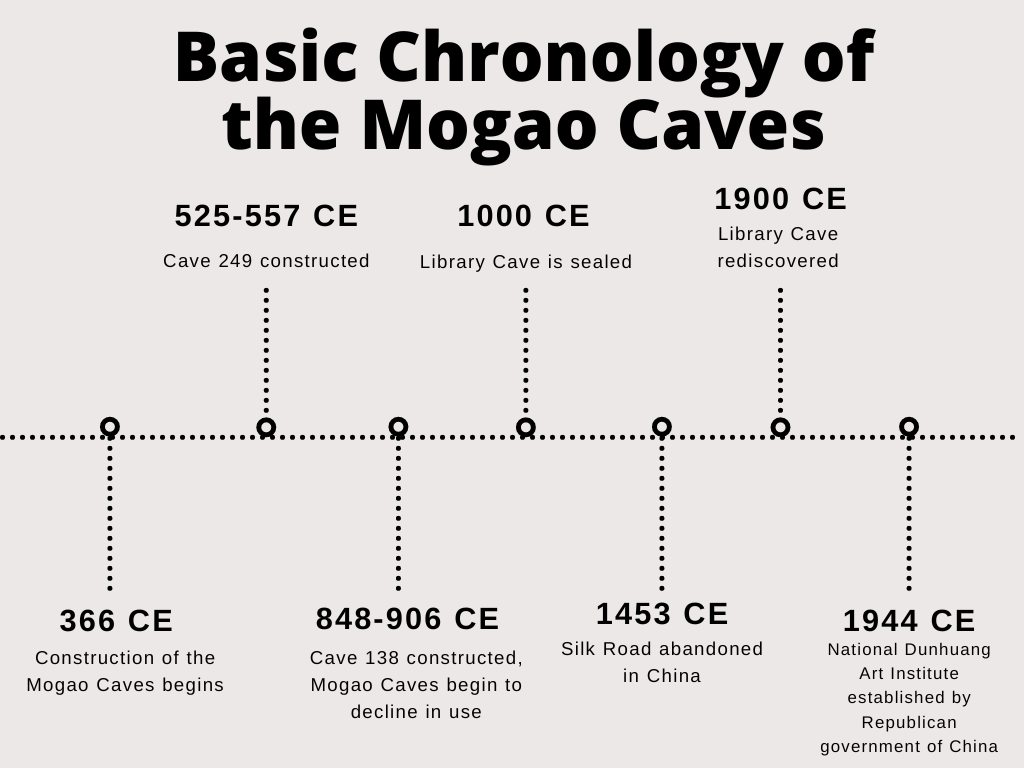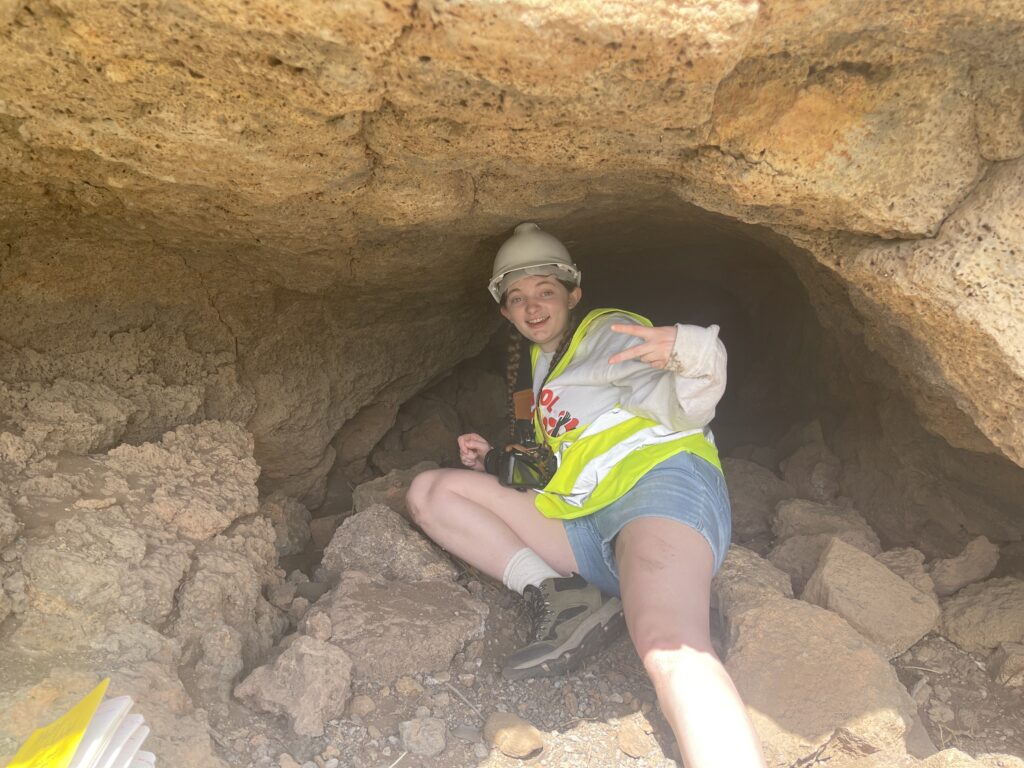
The Mogao Caves
Source: CGTN
Welcome to the world of the Mogao Grottoes – a system Chinese Buddhist cave temples in Gansu province comprised of hundreds of caves constructed over centuries.

Why are cave temples used?
Cave temples are a common Buddhist practice throughout Asia, travelling up the Silk Road with the rest of Buddhism.1 The Mogao Caves reflect a general practice on a larger scale, being one of the more extensive cave temple systems. Cave temples were popular in Buddhism due to their quiet serene environments, making them ideal spaces for meditation and worship2
Overview
Exploring the many caves and histories of Mogao leads to many lines of inquiry. The caves have a haunting beauty and sense of grandeur that has long enraptured scholars. Through their place on the Silk Road, they have recorded centuries of evolution in Chinese history.
We invite you to join us in delving further into the Mogao Caves. Through examining the motifs and symbols of the art, we will decipher what this visual culture tells us about Buddhist religion in practice. Exploring Caves 138 and 249 as case studies, we will consider how the art and ritual purposes of the temples inform us about the Sinicization of Buddhism as both caves exemplify the confluence of Buddhism with traditional Chinese mythologies and religions. Finally, we will examine the caves as ritual spaces, their construction, and modern-day curation and conservation efforts to better understand the caves’ physicality
About Us

Holly Mirales
Major: Geosciences & Hispanic Studies
Year: Sophomore
“Through researching the Mogao Caves, I better understood the idea of the Three Teachings in China as I could clearly see how Buddhism, Taoism, and Confucianism intertwine to inform the religious context of the nation.”

Ileana Anghel
Major: Biology
Year: Sophomore
“Our research on the Mogao Cave Temples greatly aided in my understanding of Buddhist art and ritual. Furthermore, I came to understand the versatility of the Mogao Caves, operating as diverse worship sites and centers of Chinese and Buddhist history.”
Acknowledgements
We would like to thank Professor Thomas Wilson, who taught our class “Asian Temples in a Digital World” and supported us through our research endeavors. We would also like to thank the incredible staff at Hamilton’s LITS, whose informative workshops helped us construct our website.